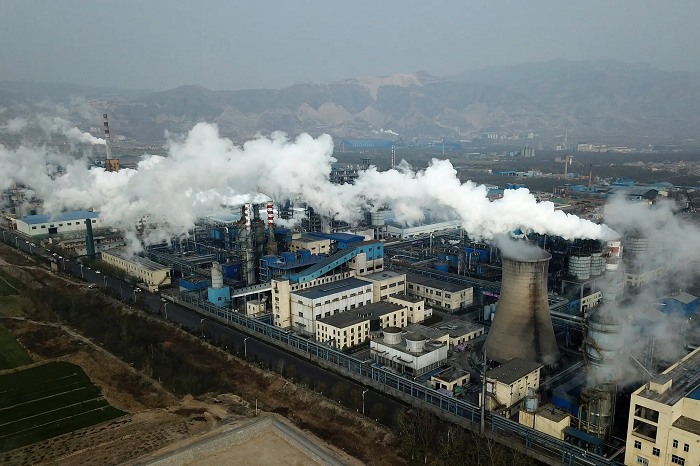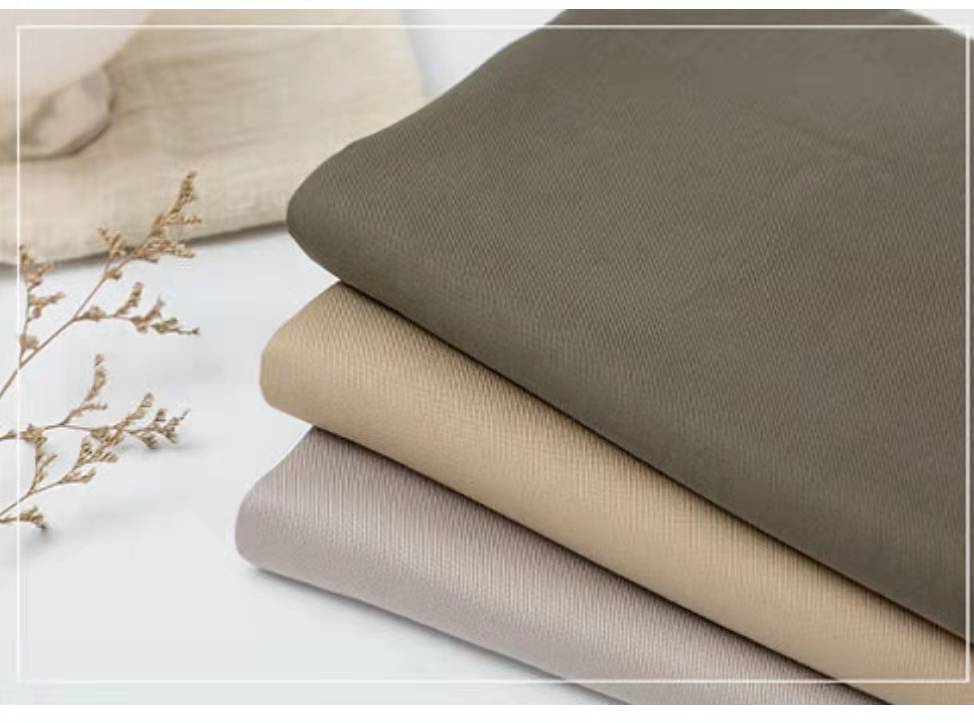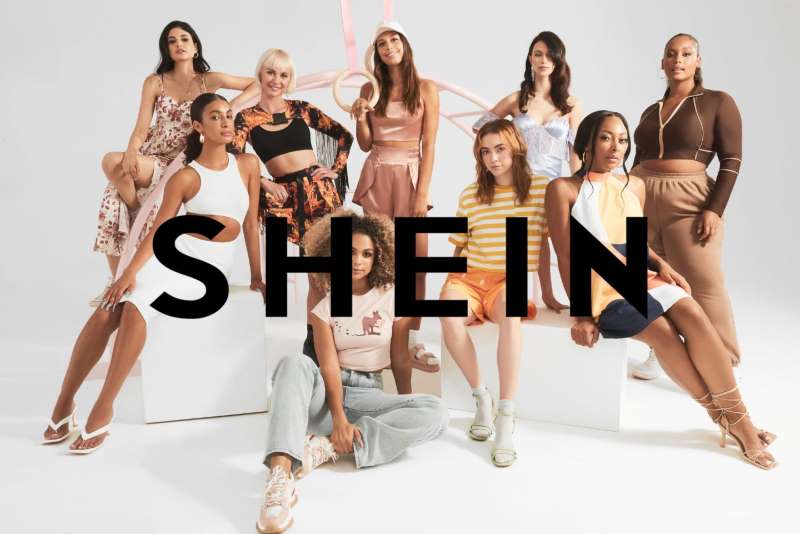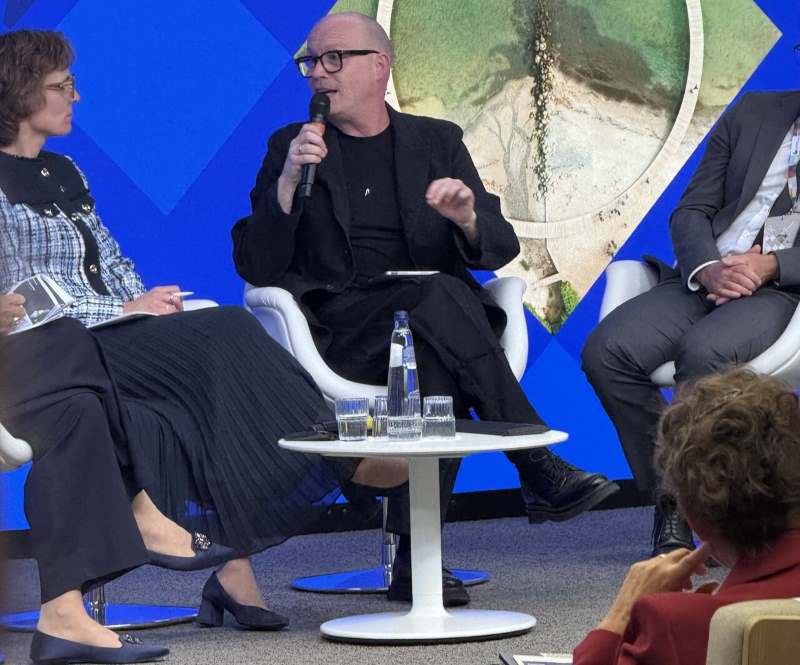FW
Scoop, the UK’s leading contemporary fashion and lifestyle trade show, will return to London from 13-15 July 2025 with an exclusive preview of Spring/Summer 2026 Cruise collections. Hosted at Olympia National Kensington, the show will feature over 200 premium fashion, lifestyle, home, and beauty labels, setting the tone for the upcoming resort season.
Curated by Scoop Founder and Managing Director Karen Radley, the event promises a refined showcase of effortless luxury and modern elegance, featuring both established names and rising design talent. Among the international highlights is Athens-based Devotion Twins, whose intricate craftsmanship and luxurious fabrics define its chic resortwear. Fellow Greek brand Haris Cotton unveils its SS26 collection Aegean Reverie, inspired by the Cyclades, blending painterly prints with natural textures in breathable linens.
Ro’s Garden, a new brand by designer Roberta Freymann, will make its Scoop debut with vibrant kaftans and dresses influenced by global travels. Thessaloniki-based Sorena brings its sustainable, handmade accessories and resort-ready apparel, combining Greek style with practical elegance.
Australia’s Oneseason offers breathable cotton pieces designed for warm-weather ease, currently available in the UK online and poised for retail expansion. UK-based Aspiga will showcase a collection rooted in artisanal craftsmanship, featuring hand-embroidered details and a sun-drenched colour palette in organic fabrics.
Karen Radley said, “This season’s Cruise collections reflect the spirit of effortless luxury and modern design that defines Scoop.”
With its intimate, curated atmosphere and a global mix of directional brands, Scoop continues to be a key destination for buyers seeking the next big trends in resort fashion and sustainable design.
Italy’s Tonello will make a dual appearance from May 21 to 23 at Denim Premiere Vision in Milan and Kingpins China in Hangzhou, spotlighting its latest innovations in garment finishing and dyeing technologies.
In Milan, Tonello will host a live dyeing workshop showcasing the G1 Lab, its most compact dyeing machine, enhanced by Wake technology. The session will highlight sustainable dyeing practices using natural materials like dried flowers, berries, and roots. Alongside, the company will present Sulfur Essence, a creative exploration of sulfur and indigo dyes made possible by DyeMate the first indigo garment dyeing system that also supports sulfur and VAT dyes.
On May 22, Tonello's Fashion Designer and Laser Specialist, Marco Visentin, will present Where Indigo Wanders in the Pitch Area. His talk will delve into the sensory and aesthetic potential of DyeMate, reimagining indigo and sulfur through bold, conscious design.
Simultaneously in Hangzhou, Tonello will unveil the next chapter of its Laundry (R)Evolution with a new generation of energy-efficient dryers developed entirely in-house. These systems aim to meet the industry’s rising demands for sustainability, high performance, and process optimization.
Visitors to Kingpins China will also experience Denim Renaissance: The Beauty of Time, a creative showcase at the venue entrance. The collection celebrates denim as a living canvas shaped by craftsmanship, nature, and time.
Tonello’s dual presence underscores its global mission: fusing innovation and tradition to lead the future of denim finishing.
Texworld and Apparel Sourcing Paris, alongside Avantex and Leatherworld, will take place from September 15 to 17, 2025, at Halls 2, 3, and 4 of the Paris-Le-Bourget Exhibition Center. Organized by Messe Frankfurt France, the show will host between 1,200 and 1,300 exhibitors from leading textile-producing countries including China, India, Turkiye, South Korea, Taiwan, and Hong Kong, reaffirming Europe’s pivotal role in a global market disrupted by US-China trade tensions.
This autumn edition mirrors the successful February format, designed to better align with buyers' schedules and boost engagement. Notably, manufacturers from Central and Eastern Europe such as Armenia, Kyrgyzstan, and Ukraine will showcase high-quality garment expertise, reflecting rising regional interest.
Innovation and sustainability will take center stage at Avantex in Hall 2. The space will spotlight technologies and circular solutions, including sustainable sourcing and bio-based materials. A highlight will be the unveiling of results from the EU-backed Herewear project by TCBL, promoting local, eco-responsible production models. Keynotes, roundtables, and the 8th Avantex Fashion Pitch judged by fashion tech and VC experts will drive industry dialogue.
The event layout maintains themed ‘universes’ focused on womenswear and activewear, creating synergy between fabrics and finished goods. Leatherworld will anchor Hall 4 alongside the Denim section. At the entrance of Hall 4, the ‘Initiatives by Texworld’ zone will showcase country-specific excellence, with Turkiye and India presenting trend-led weaves and embroidery.
The comprehensive sourcing platform reinforces Paris’s role as a global hub for fashion, innovation, and sustainable industry practices.
North Carolina-based Unifi has launched a new abrasion-resistant yarn designed for ultimate durability in tactical applications.
Called ‘Fortisyn,’ this yarn gives fabrics enhanced tear and tensile strength, providing a tough solution for military and first responder uniforms and tactical gear. Made in the US, Fortisyn meets the needs of Berry Amendment compliance.
Fabrics made with Fortisyn can handle exposure to harsh conditions and rough use while aksi retaining their shape, function, and look over time. The yarn is available in nylon 6.6 and Repreve nylon, a recycled type 6 circular nylon made from post-industrial yarn waste.
Solution-dyed for better color retention and made with Repreve nylon, Fortisyn is fully traceable with FiberPrint technology and certified by U-Trust, along with Oeko-Tex, GRS, and SCS certifications for its recycled content.
Working with mills and strategic partners, Fortisyn has undergone tough fabric testing to prove its outstanding performance, says Eddie Ingle, CEO, Unifi. Its launch expands the use of recycled, circular technology yarns into the most demanding applications, he adds.
A specialist in mechanical recycling for cotton and cotton-polyester blends, Recover has entered into a joint venture with local manufacturer Intradeco to boost production of recycled cotton fibers in Central America by setting up a production facility in El Salvador.
Located close to Central American textile waste and production streams, the 75,400-sq-ft facility will house production lines, a warehouse, research labs, and offices for support functions, and will open in H2, FY25. Some of initial production of this facility will be managed in the company’s home country of Spain. Its production capacity will increase to 12,500 metric tons by 2026-end.
Besides allowing fast turnaround times for textile producers in the Americas, the facility will also benefit companies looking to shrink their carbon footprint in transport, those nearshoring their operations, and those seeking flexibility in an increasingly risky trade environment.
Sourcing feedstock from Central America will also help US textile and apparel manufacturers ensure compliance with the Uyghur Forced Labor Prevention Act (UFLPA) and will support secured traceability for companies to back up their supply chain claims.
Central America has become increasingly vital due to its nearness to major markets, especially the US. This joint venture between Recover and Intradeco, along with its vertical supply chains, allows companies to supply recycled cotton products directly from the region, enabling quick and flexible supply chains, thus cutting lead times, costs, and environmental impact, says Anders Sjoblom, CEO, Recover.
Major non-American-based brands either have, or are setting up, sourcing operations in Central America to serve nearby countries, which really validates this move for us. The region has become increasingly important over the past few years due to the global disruptions we’ve witnessed, he adds.
This joint venture is another step in Recover’s journey to enable large-scale sustainable change in fashion through business value and inspiration. Alongwith Intradeco, the brand aims to change global trend patterns and drive innovation and sustainability in the textile industry, states Sjöblom.
Jaime Miguel, CEO, Intradeco, affirms, in partnership with Recover, Intradeco aims to enhance its production capabilities and deliver high-quality recycled products at scale to customers. This partnership represents a significant step forward in the company’s commitment to sustainability, he adds.
This will be the fifth facility for Recover, following its factories in Spain, Bangladesh, and Vietnam, as well as Pakistan, which operates through a partner. Sjöblom said he has not yet seen immediate effects.
Compared to a net loss of Rs 1.65 crore in the same quarter of the previous fiscal year, Minaxi Textiles reported a standalone net profit of Rs 0.71 crore in Q4, FY25. However, the company's revenue declined by 29.74 per cent to Rs 6.19 crore during the quarter from Rs 8.81 crore in the prior quarter of the last fiscal year.
For the full year ending in March 2025, Minaxi Textiles’ net loss narrowed to Rs 0.53 crore from the Rs 3.11 crore in the previous fiscal year. However, the company’s annual sales declined by 15.78 per cent to Rs 28.88 crore from Rs. 34.29 crore in FY24.
This performance suggests a recovery in profitability despite lower sales. Looking ahead, the company aims to focus on cost optimization and new market opportunities to support future revenue streams.
An India-based textile company, Minaxi Textiles is primarily involved in manufacturing cotton and cotton-blend fabrics. The company also weaves synthetic grey fabric for suiting and shirting. It supplies uniforms to semi-government and government organizations through contract bids. The company’s product range includes cotton quilts, Lycra suiting fabric, satin fabric, and broken twill fabric.
India's trade in apparel and home textiles with the United Kingdom is set to double in volume within the next five to six years, projects a new report by the credit rating agency ICRA.
This significant growth is expected due to the recently finalized Free Trade Agreement (FTA) between the two countries, which is anticipated to become operational in calendar year 2026, pending legal review.
The UK and India concluded their Free Trade Agreement on May 6 after roughly three years of negotiations. According to the agreement's terms, India will reduce tariffs on 90 per cent of British goods, with 85 per cent becoming completely duty-free over a ten-year period.
In return, Britain has agreed to eliminate duties on 99 per cent of India's exports to the UK. Currently, the trade between the two nations accounts for only about 2 per cent of India's total trade, indicating considerable untapped potential given the economic size and capabilities of both countries.
At present, India ranks as the UK's 12th largest trading partner overall and holds the fifth position specifically for apparel and home textile imports.
In calendar year 2024, the UK imported $1.4 billion worth of apparel and home textiles from India, representing a 6.6 percent share of the UK's total textile imports.
The United States and the European Union remain the primary export destinations for Indian apparel and home textiles, collectively accounting for 61 per cent of exports in CY2024.
The UK's share has remained relatively stable at 7-8 percent over the past five years with flat growth. However, this figure is projected to increase substantially to 11-12 per cent by CY2027, reflecting a compound annual growth rate of 11 per cent between 2024 and 2027.
Currently, the UK imposes an 8-12 per cent duty on apparel and home textiles imported from India. With the elimination of tariffs on 99 per cent of Indian goods, including textiles, manufacturers are expected to significantly increase production capacity over the next 4-5 years to fulfill anticipated orders.
China currently dominates as the largest apparel and home textile exporter to the UK with a 25 per cent market share in 2024, followed by Bangladesh (22 per cent), Turkey (8 per cent), and Pakistan (6.8 per cent).
Once the FTA is implemented, India will gain zero-duty access for its apparel and home textile exports, creating a level playing field with countries that already enjoy duty-free status, such as Bangladesh, Vietnam, and Pakistan.
Textile entrepreneurs are voicing concerns over Bangladesh Government’s decision to eliminate the reduced 15 per cent tax rate arguing that the industry is already grappling with ongoing gas and electricity shortages, and a higher tax rate would only worsen their struggles.
Bangladesh Government plans to eliminate the reduced 15 per cent tax rate for textile businesses in the upcoming fiscal year, moving away from tax exemptions, according to officials at the National Board of Revenue (NBR).
Under the new budget, the textile sector will face the standard corporate tax rate of 27.5 per cent. However, companies listed on the stock market will benefit from a slightly lower rate of 22.5 per cent, as per NBR officials. Additionally, a 2 per cent advance income tax (AIT) may be levied on imported raw materials like cotton and man-made fibers.
Rising costs over the past two years have significantly impacted profitability in the sector, says Saleudh Zaman Khan, Vice President, Bangladesh Textile Mills Association (BTMA). In such a situation, if taxes are increased, many businesses will find it difficult to survive, he adds.
A senior NBR official, involved in budget formulation and speaking anonymously, confirms, there are no plans to extend the reduced tax rate benefit for the textile sector that is set to expire on June 30 of this year. Hence, companies in this sector will have to pay the regular tax rate going forward. This move is part of the government's effort to phase out tax exemptions and boost revenue collection, he notes.
However, the existing reduced tax rate for RMG exporters, currently capped at 12 per cent, may be retained for another two years. These companies are entitled to benefits under the sunset clause until 2028, limiting the scope for early withdrawal.
Dr Syed Md Aminul Karim, former NBR member, states, for years, the government has allowed the textile and garment sectors to pay taxes at reduced rates. But now, it's time to gradually shift them to regular tax rates.
The BTMA represents 1,854 textile mills, with 58 of them listed on the stock market. Approximately $22 billion has been invested in this sector.
At the recent World Retail Congress 2025 in London, Helena Helmersson, Chairperson, Circulose and former CEO, H&M Group, urged all brands to refocus on sustainability. Helmersson acknowledged, focus on sustainability has diminished due to various reasons like the pandemic, inflation, wars, artificial intelligence (AI), etc. All these factors have diverted attention from sustainability, as it was no longer perceived as the biggest challenge facing companies.
However, there was no need to despair, Helemersson emphasized. She cited the example of the framework and graphical representation, Gartner Hype Cycle to illustrate the specific path followed by trends: from initial hype to unmet expectations, disillusionment, before stabilizing and achieving long-term implementation. The industry is currently in the ‘valley of disillusionment’ regarding sustainability, Helmersson noted. Their progress is slow with skepticism amongst consumers increasing due to rising broken promises from companies.
To break this cycle, the industry needs to bridge the gap between sustainability and profitability, Helmersson opined. For example, it needs to remove pressure on profitability during the purchasing process, she added.
Companies need to also focus on meeting practical needs to win over the disillusioned consumers, Helmersson asserted. She cited the example of the second-hand platform Sellpy which helps consumers declutter their wardrobes and is also pocket-friendly.
Companies must allow room internally for achieving goals, and form long-term partnerships, Helmersson noted. There must be coordination and investment with a long-term perspective, she added.
Kering and Balenciaga have announced the appointment of Pierpaolo Piccioli as the new Creative Director of Balenciaga, effective July 10, 2025. A celebrated designer known for his mastery of Haute Couture, Piccioli will succeed Demna, who led the fashion house for the past decade. His debut collection is scheduled for October 2025.
Piccioli, former Creative Director at Valentino, brings a distinctive creative vision and deep respect for craftsmanship to the Parisian brand. In a statement, Francesca Bellettini, Kering’s Deputy CEO for Brand Development, praised Piccioli’s creative voice and passion for savoir-faire, calling him ‘the ideal choice’ to take the house into its next chapter. She also thanked Demna for his transformative leadership, which shaped Balenciaga’s modern identity.
Gianfranco Gianangeli, CEO of Balenciaga, expressed enthusiasm about the collaboration, stating that Piccioli’s interpretation of the house’s rich heritage and bold spirit will usher in a dynamic new era.
Piccioli acknowledged the legacy he inherits, crediting Demna for his impactful vision. “Balenciaga is a brand full of possibilities. I’m honoured to carry forward its evolving aesthetic,” he said. “This is a passing of the torch I deeply respect, and I’m eager to shape a new chapter of the Maison.”
With creative alignment from the start, the partnership is poised to blend Balenciaga’s storied past with Piccioli’s refined couture sensibility. Industry watchers now await the unveiling of his first collection, expected to mark a stylistic shift while honouring Cristóbal Balenciaga’s legacy.












